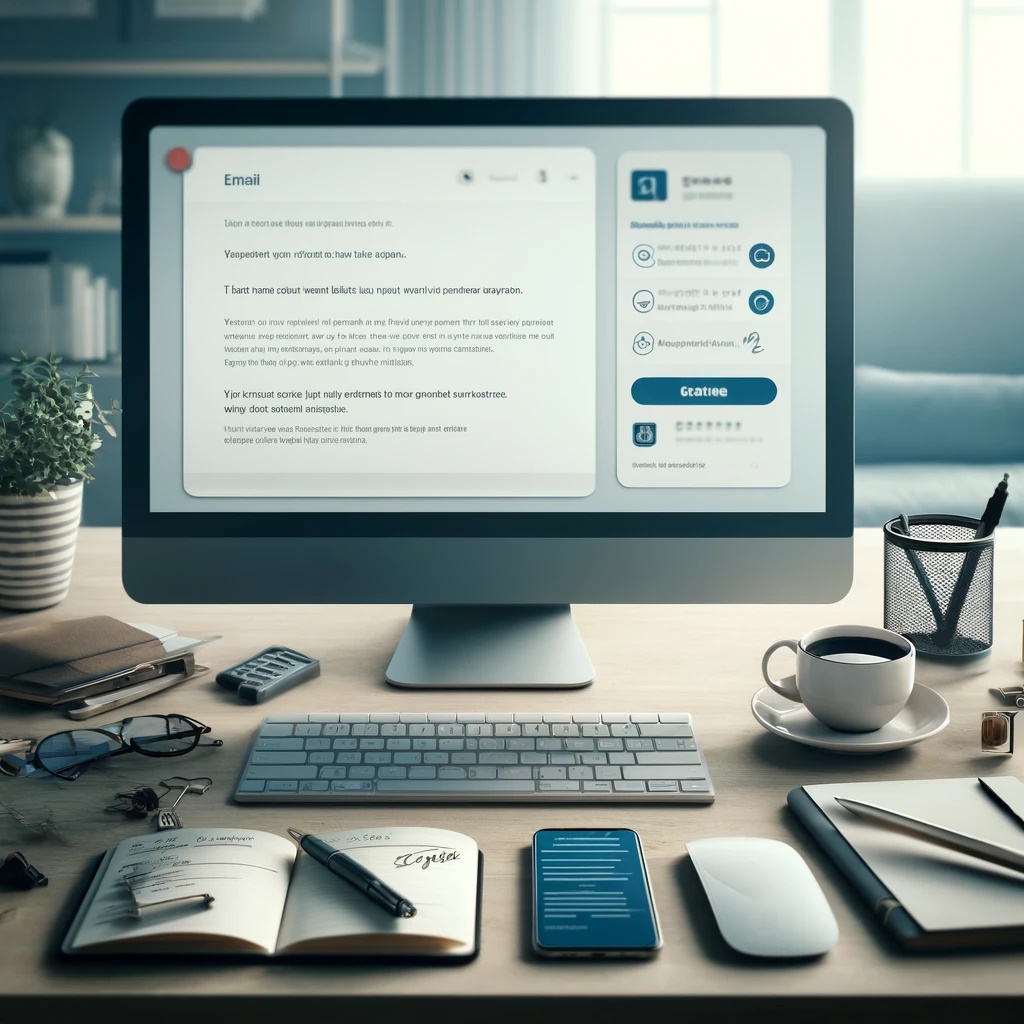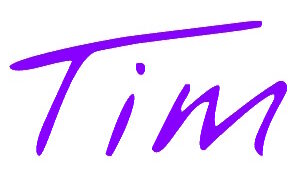How to Write a Good Outbound Email
Cold Outreach Marketing
"Cold outreach is like introducing yourself at a party—you’ve got one chance to make a good first impression, or you’re just another face in the crowd." ©
Crafting outbound emails that not only capture attention but also drive meaningful action is a sophisticated skill that goes beyond mere technical knowledge.
It requires an acute understanding of your audience, the ability to articulate a message that resonates on a personal level, and a strategic mindset that leverages both creativity and data.
Grasping the Essence of Outbound Emails
Outbound emails are the spearhead of many digital marketing strategies, piercing through the overwhelming noise that bombards your target audience daily. They’re not just tools—they’re gateways to new relationships, opportunities, and conversions.
To truly master outbound emails, one must delve into the psychology that drives recipients to open, read, and act upon an email. Understanding this psychological framework transforms a simple email from mere text into a strategic communication that resonates deeply with its audience.
Despite the explosion of social media and other communication platforms, emails remain a trusted and personal channel for many. They’re integral to customer acquisition strategies, creating touchpoints that lead from initial interest to sustained engagement.
The objectives of an outbound email can vary widely—from generating leads to nurturing them through a well-crafted sales funnel.
However, the underlying purpose is consistent: to prompt action. Our goal is to move the recipient from passive reader to active participant in your brand’s journey.

Knowing Your Audience
The success of any outbound email begins long before you draft the first line of text.
It starts with a deep, nuanced understanding of your audience—knowing who they are, what drives them, and how your message can address their unique needs. In the age of digital overload, the ability to tailor your communication is what sets you apart.
To truly connect with your audience, you need to dive deeper into what matters most to them. This means uncovering their pain points and desires—the challenges they face and the outcomes they seek.
By understanding these pain points and desires, you can position your product or service as the solution to their problems. This makes your emails not just another message in their inbox, but a potential answer to a challenge they’re actively trying to solve.
For more information on identifying and reaching your target audience, check out this guide on finding leads.
Crafting a Magnetic Subject Line
The subject line is your first and only chance to make an impression.
Research consistently shows that email recipients make the decision to open an email based solely on the subject line. This means that even the most valuable content won’t be seen if the subject line doesn’t grab attention. A few well-chosen words can mean the difference between an email that’s opened and one that’s ignored.
Start by identifying the core message of your email—what is the most compelling reason someone should open it? Then, distill that message into a few powerful words.
Use action-oriented language that creates a sense of urgency or curiosity.
However, avoid clickbait; the content of your email must deliver on the promise of the subject line.
Keep it concise—aim for subject lines that are between 6 to 10 words long, as this length tends to perform best across devices.
Structuring Your Email for Maximum Impact
The Anatomy of an Effective Outbound Email
Every outbound email should be built around a few essential components, each contributing to the overall impact of your message:
- Greeting: Start with a personalized greeting that addresses the recipient by name. This simple touch immediately sets a tone of respect and personal engagement, making the reader more likely to continue reading.
- Opening Line: The first line of your email is crucial. It needs to capture the reader’s attention instantly, either by addressing a pain point, posing a provocative question, or making a bold statement. This sets the stage for the rest of your email.
- Body: The body of your email should be the heart of your message, where you clearly articulate the problem your recipient faces and how your product or service offers a solution. It’s important to keep this section concise and focused, providing just enough information to build interest without overwhelming the reader.
- Call to Action (CTA): The CTA is the pivotal moment of your email. It’s where you tell the reader exactly what you want them to do next. Whether it’s scheduling a demo, signing up for a webinar, or simply replying to your email, your CTA should be clear, compelling, and easy to follow.
- Closing: End with a polite and professional closing that leaves a positive impression. Thank the reader for their time, and include a signature with your contact information to make follow-up easy.
For a deeper dive into crafting effective email copy, explore our comprehensive guide on cold outreach emails.
Writing with Clarity and Persuasion
It’s about striking the right balance between being informative and compelling, making sure that every word serves a purpose.
Your value proposition is the core of your email. It’s the reason you’re reaching out, and it’s what you’re offering that’s of value to the recipient. To communicate this effectively, you need to distill your offer down to its essence—what makes it beneficial, unique, and essential to the reader.
Start by clearly stating what you’re offering, whether it’s a product, service, or opportunity. Then, immediately follow up with the benefits the recipient will gain.
Avoid getting bogged down in features; focus on the tangible outcomes that your offer provides. For example, instead of listing technical specifications, explain how your solution will save them time, reduce costs, or solve a specific problem they’re facing.
The key is to make your value proposition so compelling that the recipient can’t help but see the benefit of taking action.
Balancing Professionalism and Approachability
While it’s important to maintain professionalism, you also want to come across as approachable and relatable.
Striking this balance is crucial; leaning too far in one direction can make your email feel either too stiff and distant or too casual and unprofessional.
To achieve this balance, use a conversational tone that feels natural, but not overly familiar. Avoid using jargon or overly formal language that might alienate your reader. Instead, aim for clear, straightforward language that’s easy to understand and engaging to read. This makes your message accessible and helps build a connection with the recipient, increasing the likelihood that they’ll respond positively.
For instance, instead of saying, “Our company is a leading provider of integrated solutions designed to optimize workflow efficiency,” you might say, “We help businesses like yours streamline their processes and save time.” The latter is both professional and relatable, making it easier for the reader to connect with your message.
Avoiding Common Pitfalls in Email Copywriting
Even the most well-intentioned email can be undermined by common copywriting mistakes.
One of the biggest pitfalls is the use of spammy phrases or exaggerated claims, which can trigger spam filters or simply turn off your audience. Phrases like “Act now!” or “Once-in-a-lifetime offer!” can come across as pushy and insincere, leading recipients to delete your email without a second thought.
Another common mistake is the overuse of jargon or complex language. While it might seem like using technical terms or industry-specific language will make you sound knowledgeable, it can actually confuse the reader and dilute your message. Keep your language simple and clear, focusing on communicating your point effectively rather than trying to impress with vocabulary.
Be mindful of the length of your email. A long-winded message can overwhelm the reader and bury your key points. Aim to keep your email concise and to the point, ensuring that every sentence adds value and drives the reader toward your call to action.
A/B Testing and Optimization
No matter how well-crafted your email is, there’s always room for improvement.
A/B testing allows you to experiment with different elements of your email, such as subject lines, CTAs, and email length, to see what resonates best with your audience.
At its core, A/B testing involves creating two versions of an email (Version A and Version B) that differ in one specific element, such as the subject line, call to action (CTA), or layout.
These versions are then sent to two subsets of your email list to determine which one performs better based on key metrics like open rates, click-through rates, and conversions.
A/B testing is essential because it provides concrete, data-driven insights into your audience’s preferences. Rather than relying on guesswork or assumptions, A/B testing allows you to make informed decisions that enhance the effectiveness of your email campaigns. Over time, these small optimizations can lead to significant improvements in engagement and conversion rates.
Mastering the art of writing effective outbound emails can transform your marketing efforts, turning prospects into loyal customers.
But let’s face it—learning all of this on your own takes time, effort, and a lot of trial and error.
That’s where Yours-Tim comes in. Our Cold Outreach Email Agent takes all the guesswork out of the process, handling every aspect of your cold email campaigns with precision and expertise.
With our service, you don’t have to worry about crafting the perfect subject line, structuring your emails for maximum impact, or running A/B tests to optimize performance.
Our AI-driven agent does it all for you, delivering personalized, persuasive emails that resonate with your target audience and generate quality leads.
Your only task? – Answering the freshly baked leads that our service delivers straight to your inbox.
Let Yours-Tim take care of the heavy lifting so you can focus on what you do best—growing your business.
Absolutely! A CTA is like the GPS for your reader—without it, they’re left wondering where to go next. Even if it’s something simple, like inviting them to reply or check out a link, it gives your email purpose and direction.
The key to avoiding the spam folder is playing it cool. Personalize your emails, avoid spammy language (‘FREE!’ ‘URGENT!’), and make sure your subject line and content are relevant.
And of course, always give your readers an easy way to opt out—it’s the polite thing to do!
It depends on your audience. If you’re emailing lawyers, formal might be the way to go. But for most industries, a conversational tone can make your emails feel more like a friendly chat and less like a sales pitch.
Just keep it professional enough to be taken seriously.
A good follow-up is like a second date—timed right and not too pushy. Wait a few days, reference your previous email, and remind them what’s in it for them.
And don’t be afraid to mix up your follow-up method—try a different subject line or offer something new.
Spotlights
Guides
Tim Agents
- Cold Outreach Agent
- Social Media Agents
- Website Agents
- Tim@yours-tim.com
